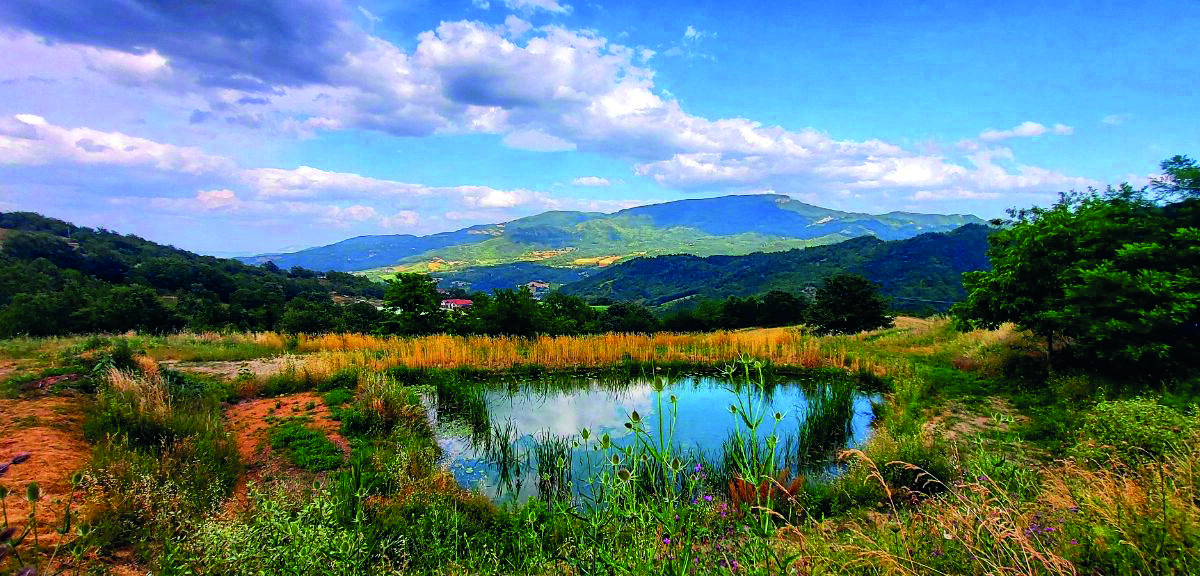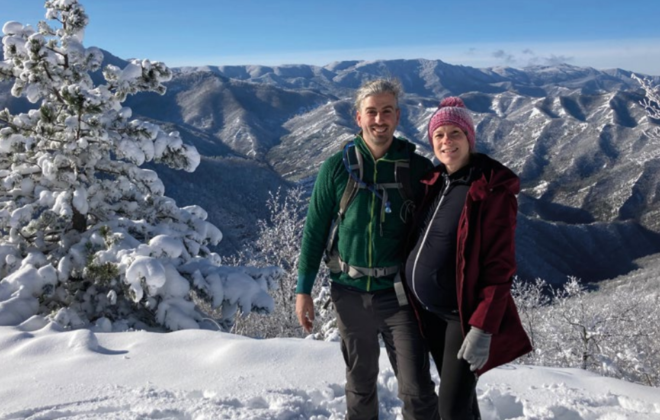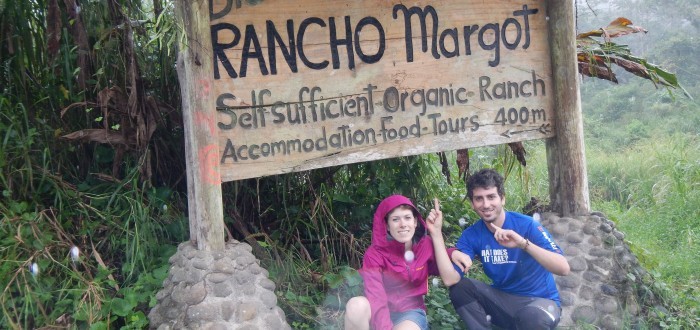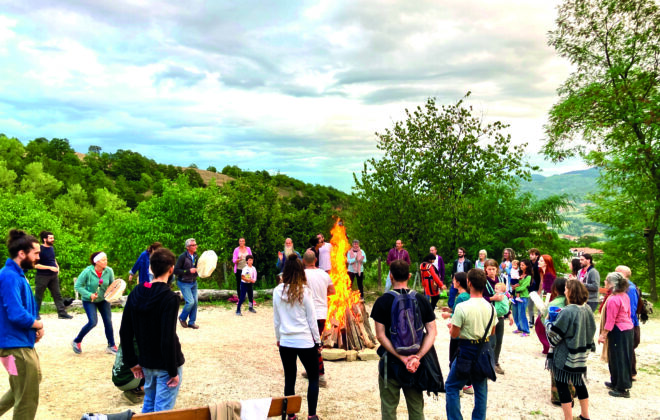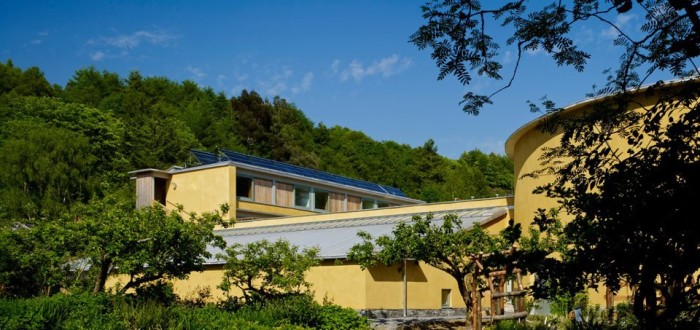Desert or Paradise?
Collecting and storing water is a concrete step towards being free: here is what has been done in practice at Autosuffienza – Centre for Applied Ecology
Francesco Rosso | Creator and custodian of Autosufficienza Centre
In 2009, after years of searching, we finally decided to buy the land on which La Fattoria dell’Autosufficienza now stands.
We had long been looking for a place where we could become resilient, i.e. ready for the changes and challenges we would face in the years to come.
We were aware that, as a human species in the western world, we were becoming weaker and weaker: for some 300,000 years we were self-sufficient in water, food, shelter, heating, health; all thanks to what our surroundings offered us. In recent decades, however, step by step, we have become completely dependent on a small group of multinational corporations, which in fact provides us with everything we need for survival.
Cities like Dubai and Las Vegas, communicated to the world as role models, are certainly the most unprepared for any kind of crisis.
The constant threat of economic, financial, energy and environmental crises has led us to imagine a place of self-sufficiency, where we can be independent of the ‘system’ and guarantee, for ourselves and future generations, survival even in the event of catastrophes of various kinds.
Without water there is no life
During the search for a place to build our self-sufficiency, one of the indispensable requirements was the presence of quality spring water.
Human beings and all living creatures consist of at least 70% water. The Earth itself, seen as a living being, respects this parameter and is 70% water. However, this water is 97% salty. Of the remaining 3%, 75 %is fresh water trapped in glaciers and a further 12% lies more than 700 metres below the surface.
The water in lakes, rivers, groundwater tables and in the atmosphere available to humans and most living things on earth is 0.375% of that on the planet. Fresh, clean water is the greatest wealth we can have.
The goal of clean water led us to search high up: unfortunately, when you are low down there is almost always someone polluting above you.
When we arrived in Paganico di Bagno di Romagna in the province of Forlì Cesena, 700 metres above sea level, we were shown a farm that had been abandoned for 50 years from a residential point of view and for over 20 years from an agricultural point of view.
All the buildings were collapsed and dilapidated, there was no interesting infrastructure, there were no fruit trees, there were no lakes or streams to guarantee water all year round, but there were natural springs of pure, quality water.
We decided that this place would become the change we wanted to see in the world.

Water when you don’t need it
At Fattoria dell’Autosufficienza, as in many parts of Italy, it rains a lot during the colder months, when water is least needed, and very rarely during the summer months, when we need it most. From the earliest years, we realised how in the driest summers the streams would dry up completely and the springs captured upstream would not be sufficient for agricultural use.
Our knowledge of permaculture, and in particular that put into practice by Sepp Holzer – the rebellious farmer with a lush farm in the Southern Alps who would become a role model – made us realise immediately that we would have to invest a lot of energy, in the years to come, in collecting and conserving water.
Investing in water (and therefore in life) for seven generations
Today, everyone is looking for recipes and advice offering immediate solutions to the increasing drought and infertility affecting much of Italy’s land. Immediate solutions always involve water and soil fertility as an externally produced event, very often appearing cheap in the short term, but are extremely expensive in the long run.
Our choice has been to invest for the next seven generations and, even at the expense of immediate benefits, to think about the impact of our every action, so as to build wealth and beauty for those who will inhabit these places after us.
For permaculture, water, like any indispensable resource, must be sustained by multiple elements: with this in mind, we studied everything we could do to harvest and infiltrate as much of it as possible into our land.
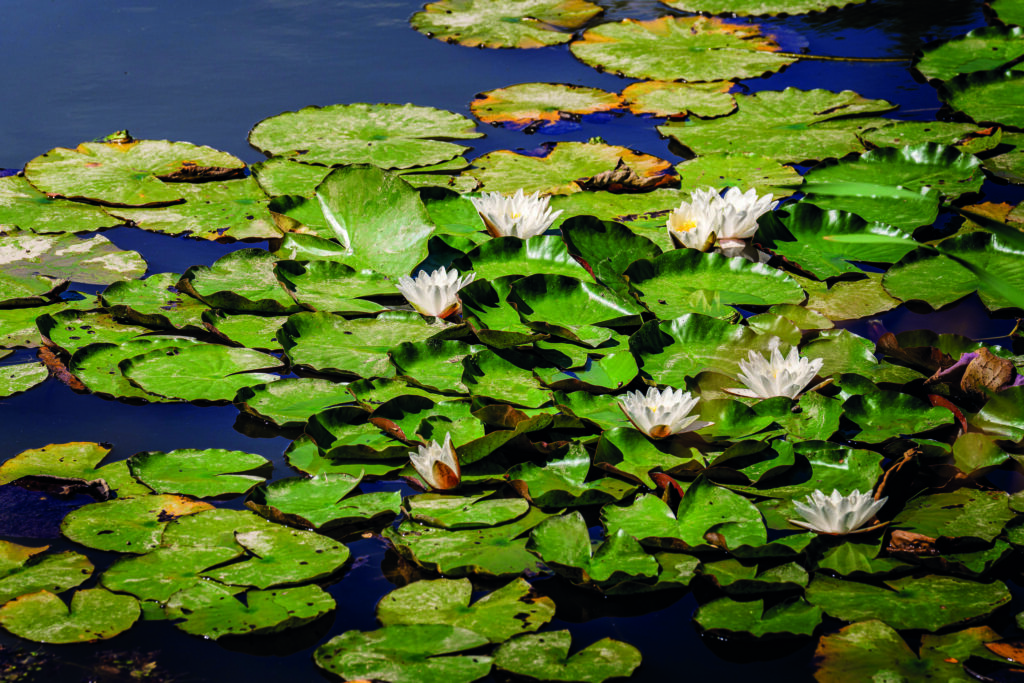
Practical interventions on the Farm
- Swales
One of the very first works was the construction of 2.2 km of swales (level ditches) in the extensive arable fields where we grow ancient cereals, legumes and seeds. In contrast to drainage ditches that convey water quickly away from the land, the swale collects and infiltrates water slowly into the soil, recharging the water table. Interspersing one swale close to another along the slope also greatly reduces surface erosion, as the water can never gain speed.
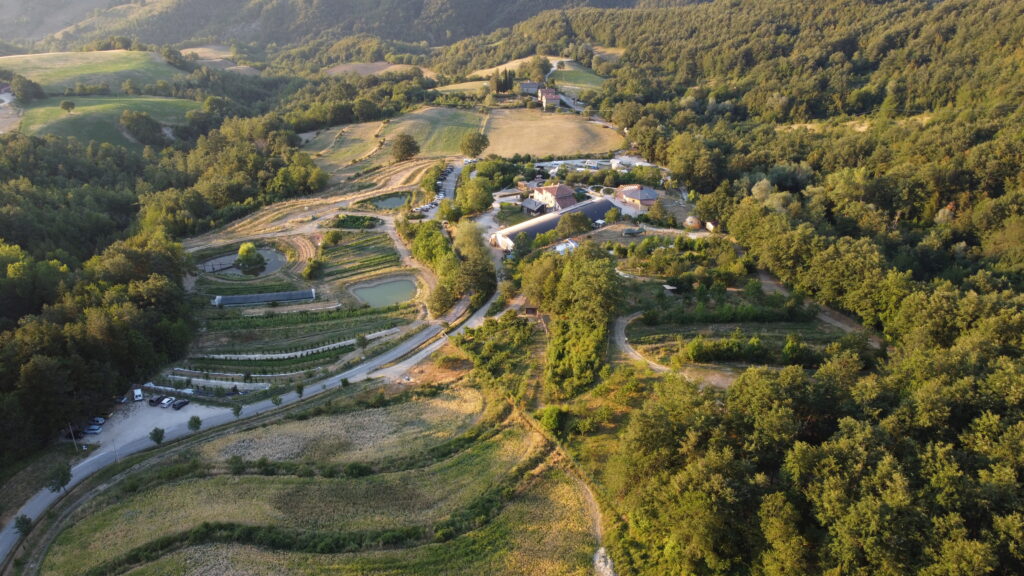
- Natural water catchment basins
Following a visit to Sepp Holzer’s Krametherof, we were astounded by the beauty and productivity that this man had managed to create in a completely inhospitable place and climate, and also thanks to his initial advice, we started terracing the land surrounding the farm centre and creating natural water catchment basins, i.e. without the aid of tarpaulins or cement.
We had already tried in the past to make basins by digging the ground in some wet areas or areas that we felt could collect water, but with disappointing results. The neighbours confirmed to us that, given their previous experiences, it was not possible to collect water in these areas without using cement or plastic.
When we put the question to Sepp Holzer, he replied that he had done lakes all over the world without cement and plastic, in any climate and terrain without failure, and that we certainly would not be the first.
And so, in 2018, the first two natural reservoirs of the Farm were made, followed by others in the following years. These are wonderful mirrors of water that immediately filled with life: frogs, newts, water snakes, dragonflies and birds came from all over to settle in the new home and enrich the Farm with biodiversity.
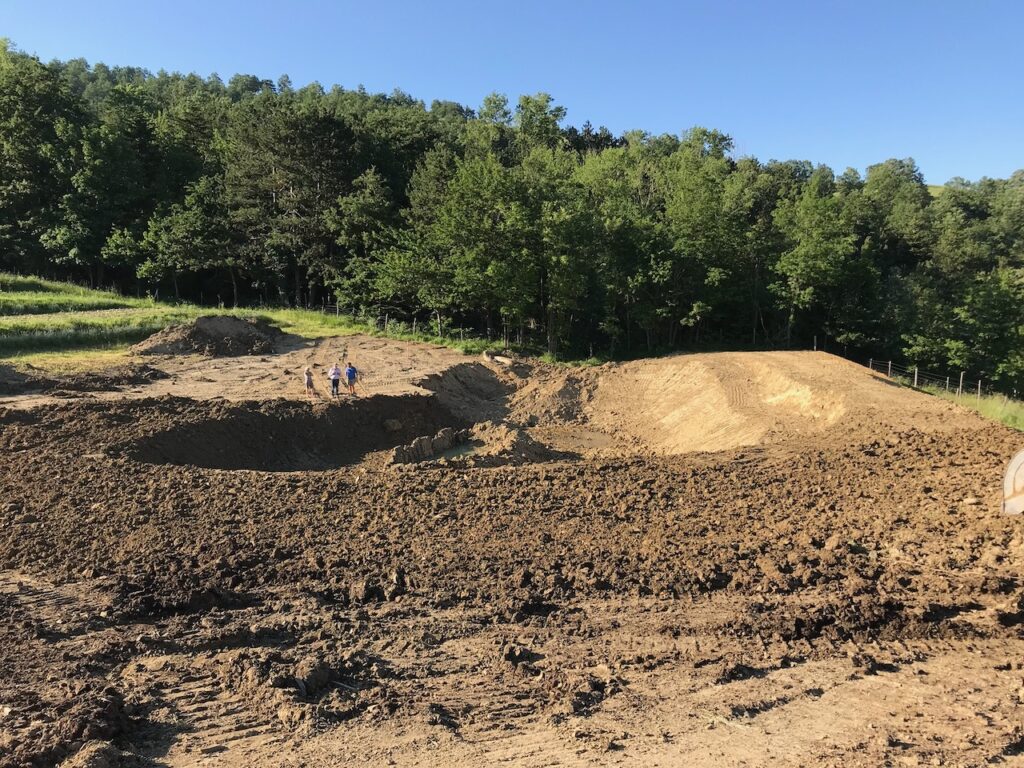
- Terracing
Even before Sepp’s arrival, we had already started terracing the land around the company centre: having learnt with him the technique to do it safely and professionally, more than two hectares were terraced in just a few years. The terracing and lakes require a lot of energy in the initial phase. They are done with a heavy excavator, which clearly consumes diesel, pollutes the atmosphere and radically alters the soil. This is why those who take a natural farming approach are not always in favour of this type of intervention.
The main reason is that they reason in the short term and not over seven generations. If they considered amortising the initial environmental and economic costs with 300 years of soil regeneration and water harvesting, the initial investment would become insignificant.
We had very sloping and very eroded soils near the farm centre that were unable to infiltrate water and retain organic matter. Soils that became poorer every year. Today, the terraces, in addition to becoming richer every year in organic matter and retaining a large amount of water, have become super productive thanks to a polyculture that was unthinkable before the interventions carried out, which sees fruit trees and berries on the edge of the slope, aromatic herbs on the slopes and vegetables on the terrace.

- Rainwater collection
The gutters of the farm buildings channel water to storage tanks and the overflow to a catchment basin, so that 100% of the rain that falls in more than 1,500 square meters of covered area is not lost. Water from the roadside ditch has also been channelled into the basin, so that it too can further contribute to water collection.
- Treatment and reuse of grey and black water
Black and grey water from the facilities following a phytodepuration process (filtration with gravel, plants and bacteria) not only does not risk polluting soil and groundwater, but is even recovered in a downstream basin used for irrigating a vineyard and several surrounding areas.
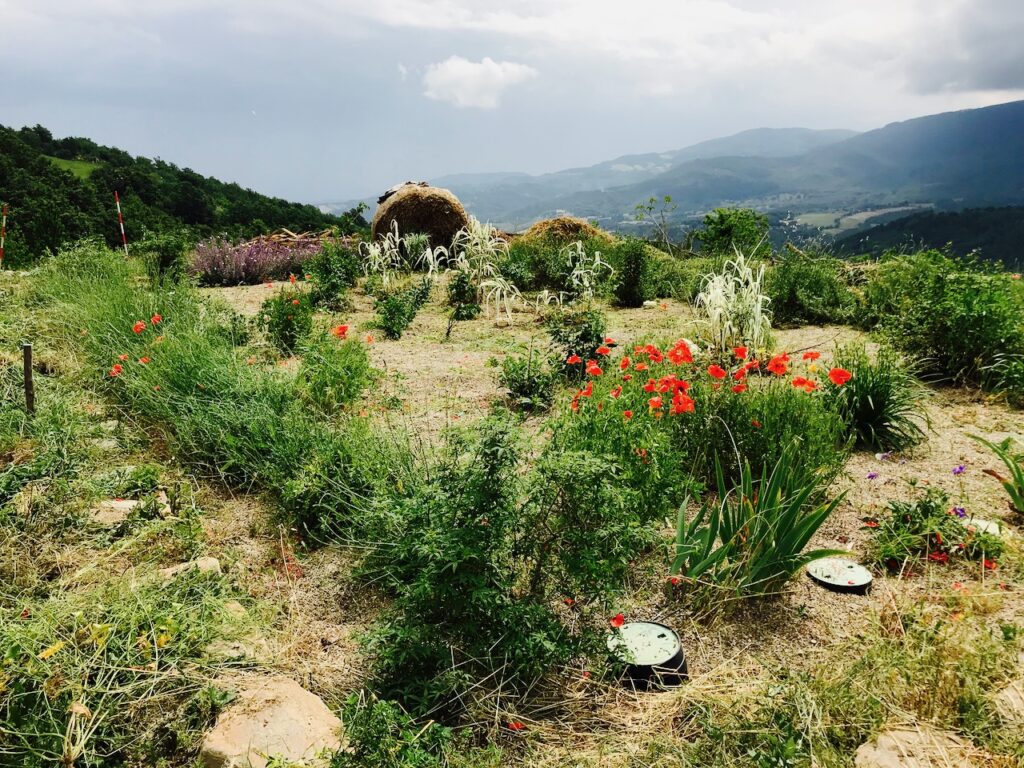
- Intercepting the springs
When we became aware of a road in the forest upstream that was collapsing, we followed the water in September, the month of maximum dryness. We were able to capture the spring at the rock and thus found the supply for another water catchment basin we had made in the past, but which tended to dry up during the summer.
- Mulching and organic matter
The way we cultivate also contributes to retaining as much water as possible in the soil. Keeping the soil covered with vegetation as much as possible, with abundant mulching and the addition of organic matter helps to collect water, as well as limiting evapotranspiration. Various studies show that a soil with only 2% organic matter can reduce the need for irrigation by 75%, compared to poor soils in which the amount of organic matter is less than 1%.
The combination of these solutions leads us to collect huge amounts of water in reservoirs, tanks, but also in the soil and groundwater, which, in exceptionally dry and hot years such as 2022, proved providential.

Collecting and storing water is a concrete step to realise a paradise.
This article appeared in Vivi Consapevole magazine – n°70 (September/November 2022).
Tags In
Related Posts
Deserto o Paradiso?
Raccogliere e immagazzinare l’acqua è un passo concreto per essere liberi: ecco cosa è stato fatto in pratica al Centro di Ecologia Applicata Autosufficienza
Francesco Rosso | Ideatore e custode del Centro Autosufficienza
Nel 2009, dopo anni di ricerca, decidemmo finalmente di acquistare i terreni su cui oggi sorge La Fattoria dell’Autosufficienza.
Cercavamo da tempo un luogo in cui fosse possibile diventare resilienti, ossia pronti ai cambiamenti e alle sfide a cui saremmo andati incontro negli anni successivi.
Eravamo consapevoli che, come specie umana facente parte del mondo occidentale, stavamo diventando sempre più deboli: per circa 300.000 anni siamo stati autosufficienti per quel che riguardava l’acqua, il cibo, il riparo, il riscaldamento, la salute; tutto ciò grazie a quello che l’ambiente circostante ci offriva. Negli ultimi decenni però, passo dopo passo, siamo diventati completamente dipendenti da un piccolo gruppo di multinazionali, che di fatto ci offre tutto ciò che ci serve per la sopravvivenza.
Città come Dubai e Las Vegas, comunicate al mondo come modelli da seguire, sono sicuramente le più impreparate a qualsiasi tipo di crisi.
La minaccia costante di crisi economiche, finanziarie, energetiche e ambientali ci ha portato a immaginare un luogo di autosufficienza, dove poter essere indipendenti dal “sistema” e garantire, a noi stessi e alle generazioni future, la sopravvivenza anche in caso di catastrofi di varia natura.
Senza acqua non c’è vita
Durante la ricerca del luogo dove costruire la nostra autosufficienza uno dei requisiti irrinunciabili fu la presenza di acqua sorgiva di qualità.
L’essere umano e tutte le creature viventi sono costituiti per almeno il 70% di acqua. La Terra stessa, vista come essere vivente, rispetta questo parametro ed è ricoperta al 70% da acqua. Quest’acqua è però per il 97% salata. Del restante 3%, il 75% è acqua dolce intrappolata nei ghiacciai e un ulteriore 12% si trova a oltre 700 metri di profondità.
L’acqua nei laghi, fiumi, falde freatiche e in atmosfera disponibile per l’essere umano e la maggior parte degli esseri viventi terrestri è lo 0,375% di quella presente sul pianeta. L’acqua dolce e pulita è la più grande ricchezza che si possa avere.
L’obbiettivo dell’acqua pulita ci portò a ricercare in altezza: purtroppo quando sei in basso quasi sempre c’è qualcuno che inquina sopra di te.
Arrivati a Paganico di Bagno di Romagna in provincia di Forlì Cesena, a 700 metri sopra il livello del mare, ci fu mostrata un’azienda agricola abbandonata da 50 anni dal punto di vista abitativo e da oltre 20 anni dal punto di vista agricolo.
Tutti gli edifici erano crollati e fatiscenti, non c’erano interessanti infrastrutture, non c’erano alberi da frutto, non c’erano laghi o torrenti che garantissero acqua tutto l’anno, ma c’erano della sorgenti naturali di acqua pura e di qualità.
Decidemmo che quel luogo sarebbe diventato il cambiamento che volevamo vedere nel mondo.

L’acqua quando non serve
Alla Fattoria dell’Autosufficienza, come in molte parti d’Italia, piove tanto durante i mesi più freddi, quando l’acqua serve meno e molto raramente durante i mesi estivi, quando ne abbiamo grande bisogno. Fin dai primi anni ci rendemmo conto di come nelle estati più siccitose i torrenti si seccavano completamente e le sorgenti captate a monte non fossero sufficienti per gli usi agricoli.
La conoscenza della permacultura e in particolare di quella messa in pratica da Sepp Holzer – il contadino ribelle che ha una rigogliosa fattoria sulle Alpi Austriche e che diventerà uno dei modelli di riferimento – ci fece subito comprendere che avremmo dovuto investire tante energie, negli anni a venire, per raccogliere e conservare l’acqua.
Investire nell’acqua (e quindi nella vita) per sette generazioni
Oggi tutti cercano ricette e consigli che offrano soluzioni immediate alla siccità e all’infertilità crescente che coinvolgono buona parte dei terreni italiani. Le soluzioni immediate prevedono sempre l’acqua e la fertilità del terreno come un evento prodotto dell’esterno, molto spesso appaiono economiche nel breve periodo, ma sono estremamente costose nel lungo periodo.
La nostra scelta è stata quella di investire per le prossime sette generazioni e, anche a scapito di vantaggi immediati, ragionare sull’impatto di ogni nostra azione, in modo da costruire ricchezza e bellezza per chi abiterà questi luoghi dopo di noi.
Per la permacultura l’acqua, come ogni risorsa indispensabile, deve essere sostenuta da elementi multipli: in quest’ottica abbiamo analizzato tutto ciò che era possibile fare per raccoglierne e infiltrarne il più possibile nei nostri terreni.

Interventi pratici in Fattoria
- Swales
Uno dei primissimi lavori è stato la realizzazione di 2,2 chilometri di swales (fossi livellari) nei campi seminativi estensivi dove coltiviamo cereali antichi, legumi e semi. Al contrario dei fossi di drenaggio che convogliano l’acqua per trasportarla velocemente via dai terreni, lo swale raccoglie e infiltra l’acqua lentamente nel terreno, ricaricando la falda freatica. Intervallando uno swale vicino all’altro lungo il pendio riduciamo enormemente anche l’erosione superficiale, in quanto l’acqua non può mai prendere velocità.

- Bacini di raccolta
In seguito alla visita al Krametherof di Sepp Holzer, rimasti sbalorditi dalla bellezza e produttività che quest’uomo era riuscito a creare in un luogo e un clima completamente inospitali, anche grazie alla sua consulenza iniziale, abbiamo iniziato a terrazzare i terreni circostanti il centro aziendale e realizzare bacini di raccolta d’acqua naturali, ossia senza l’ausilio di teli o cemento.
Avevamo già provato in passato a realizzare dei bacini scavando il terreno in alcune zone umide o che comunque ci sembrava potessero raccogliere acqua, ma con risultati deludenti. I vicini ci confermarono che, viste le loro esperienze pregresse, in questi terreni non era possibile raccogliere acqua senza l’utilizzo di cemento o plastica.
Quando ponemmo a Sepp Holzer il problema rispose che aveva realizzato laghi in tutto il mondo senza cemento e plastica, in qualsiasi clima e terreno senza fallire e che certamente noi non saremmo stati i primi.
E così, nel 2018, sono stati realizzati i primi due bacini naturali della Fattoria, seguiti da altri negli anni successivi. Si tratta di specchi d’acqua meravigliosi che si sono subito riempiti di vita: rane, tritoni, bisce d’acqua, libellule, uccelli sono accorsi da ogni dove per insediarsi nella nuova casa e arricchire di biodiversità la Fattoria.

- Terrazzamenti
Già prima dell’arrivo di Sepp avevamo iniziato a terrazzare i terreni circostanti il centro aziendale: appresa con lui la tecnica per farli in sicurezza e a regola d’arte, sono stati terrazzati oltre due ettari in pochi anni. I terrazzamenti e i laghi richiedono un dispendio energetico importante in fase iniziale. Sono realizzati con un escavatore pesante che chiaramente consuma gasolio, inquina l’atmosfera e modifica radicalmente il suolo. Per questo non sempre chi ha un approccio all’agricoltura naturale è favorevole a questo tipo di interventi.
La motivazione principale è che fa un ragionamento a breve termine e non a sette generazioni. Se considerassero di ammortizzare gli iniziali costi ambientali ed economici con 300 anni di rigenerazione del suolo e raccolta dell’acqua, l’investimento iniziale diventerebbe insignificante.
Noi avevamo terreni vicino al centro aziendale molto pendenti e molto erosi che non erano in grado di infiltrare acqua e di trattenere sostanza organica. Terreni che ogni anno diventavano più poveri. Oggi i terrazzamenti, oltre ad arricchirsi ogni anno di sostanza organica e raccogliere una gran quantità d’acqua sono diventati super produttivi grazie a una policoltura impensabile prima degli interventi effetuati, che vede alberi da frutto e frutti di bosco sul ciglio della scarpata, erbe aromatiche sulle scarpate e ortaggi sulla terrazza.

- Raccolta dell’acqua piovana
Le grondaie degli edifici aziendali convogliano l’acqua verso delle cisterne di accumulo e il troppo pieno arriva a un bacino di raccolta, in modo che il 100% della pioggia che cade in oltre 1.500 metri quadrati di superficie coperta non venga dispersa. Anche l’acqua della fossetta della strada è stata convogliata nel bacino, in modo che anch’essa possa contribuire ulteriormente alla raccolta di acqua.
- Trattamento e riuso acque grigie e nere
Le acque nere e grigie delle strutture a seguito di un processo di fitodepurazione (filtrazione con ghiaia, piante e batteri) non solo non rischiano di inquinare terreni e falda, ma addirittura vengono recuperate in un bacino a valle utilizzato per l’irrigazione di un vigneto e diverse zone circostanti.

- Intercettazione delle sorgenti
Quando ci siamo accorti di una strada nel bosco a monte che franava, abbiamo seguito l’acqua in settembre, mese di massima secca. Siamo riusciti a captare la sorgente in corrispondenza della roccia e così abbiamo trovato l’alimentazione per un altro lago di raccolta che avevamo realizzato in passato, ma che tendeva a prosciugarsi durante l’estate.
- Pacciamatura e sostanza organica
Anche il modo in cui coltiviamo contribuisce a trattenere più acqua possibile nel terreno. Tenere il suolo il più possibile coperto da vegetazione, con pacciamature abbondanti e aggiunta di sostanza organica contribuisce a raccogliere acqua, oltre che a limitare l’evapotraspirazione. Vari studi dimostrano che un terreno con solo il 2% di materia organica può ridurre la necessità di irrigazione del 75%, rispetto a suoli poveri nei quali la quantità di sostanza organica è inferiore all’1%.
L’unione di queste soluzioni ci porta a raccogliere nei bacini, nelle cisterne ma anche nel suolo e nella falda freatica enormi quantità di acqua che, in anni eccezionalmente siccitosi e caldi come il 2022, si sono rilevate provvidenziali.

Raccogliere e immagazzinare l’acqua è un passo concreto per realizzare un paradiso.
Questo articolo è apparso sulla rivista Vivi Consapevole 70 (settembre/novembre 2022).
Tags In
Newsletter
ARGOMENTI
- Activities (8)
- Attività (10)
- Attrattive (16)
- Cosa fare (22)
- Farm products (4)
- Fattoria dell'autosufficienza (51)
- Fattoria dell'autosufficienza (39)
- Fauna (8)
- Flora (5)
- I nostri modelli (14)
- Istruzioni per viaggiare (2)
- News (63)
- News (96)
- Our models (14)
- Permacultura (30)
- Permaculture (23)
- Prodotti della fattoria (4)
- Senza categoria (2)
- Senza categoria (4)
- Things to do (22)
- Tourist attractions (15)
